Abstract
It is now well established that there are two kinds of complement-fixing antigens of influenza virus: the soluble, type-specific, antigens, found mainly in infected tissue but also within the virus particle; and the virus, strain-specific, antigens, closely linked with the haemagglutinating component. For true results in complement-fixation testing in influenza, antigens or antisera of the one kind must be free of the other kind. This paper describes in detail the preparation of reagents for such testing and a variety of basic aspects of test procedures.
Full text
PDF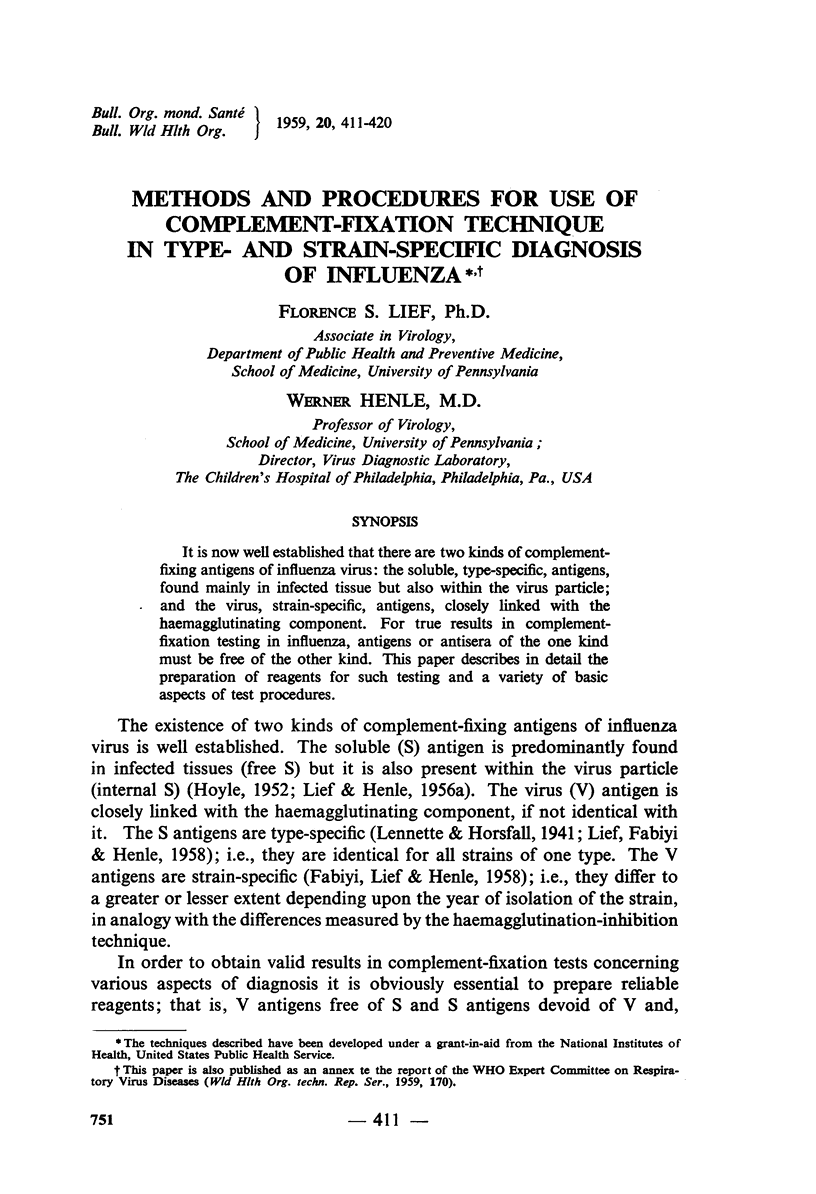
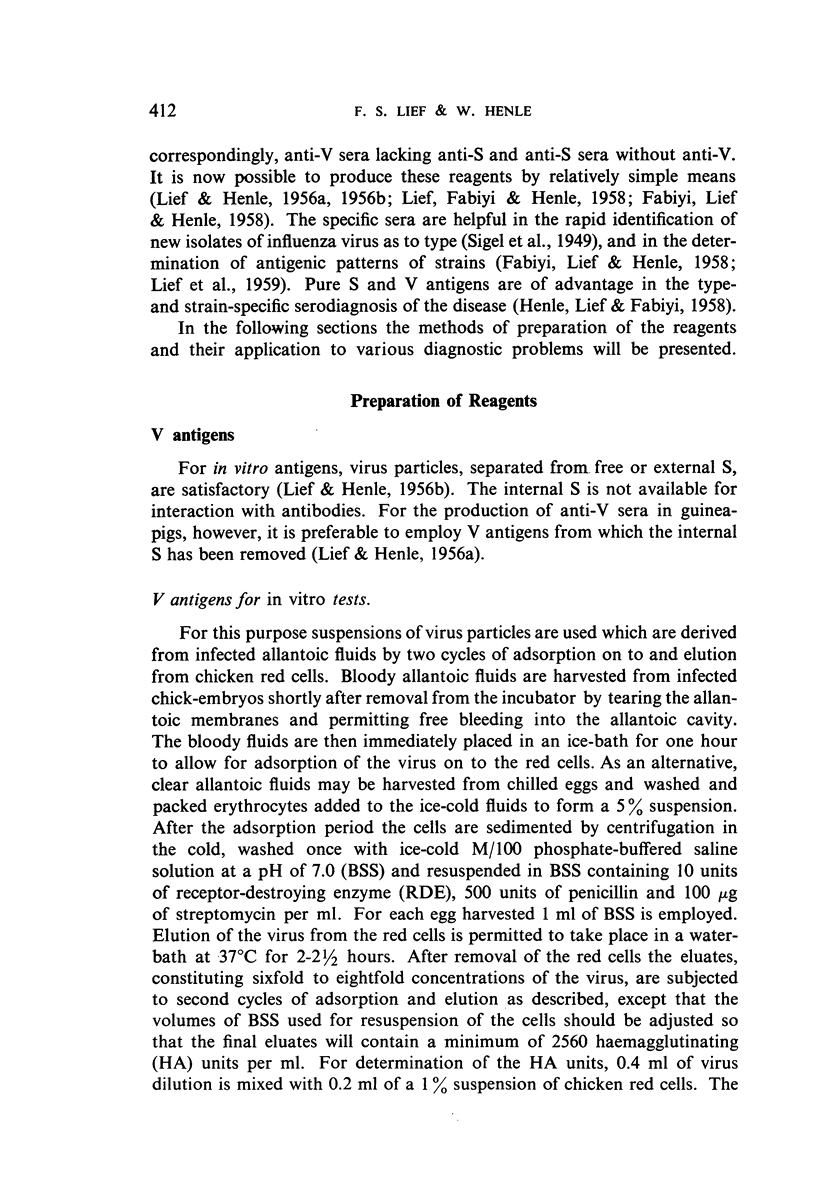
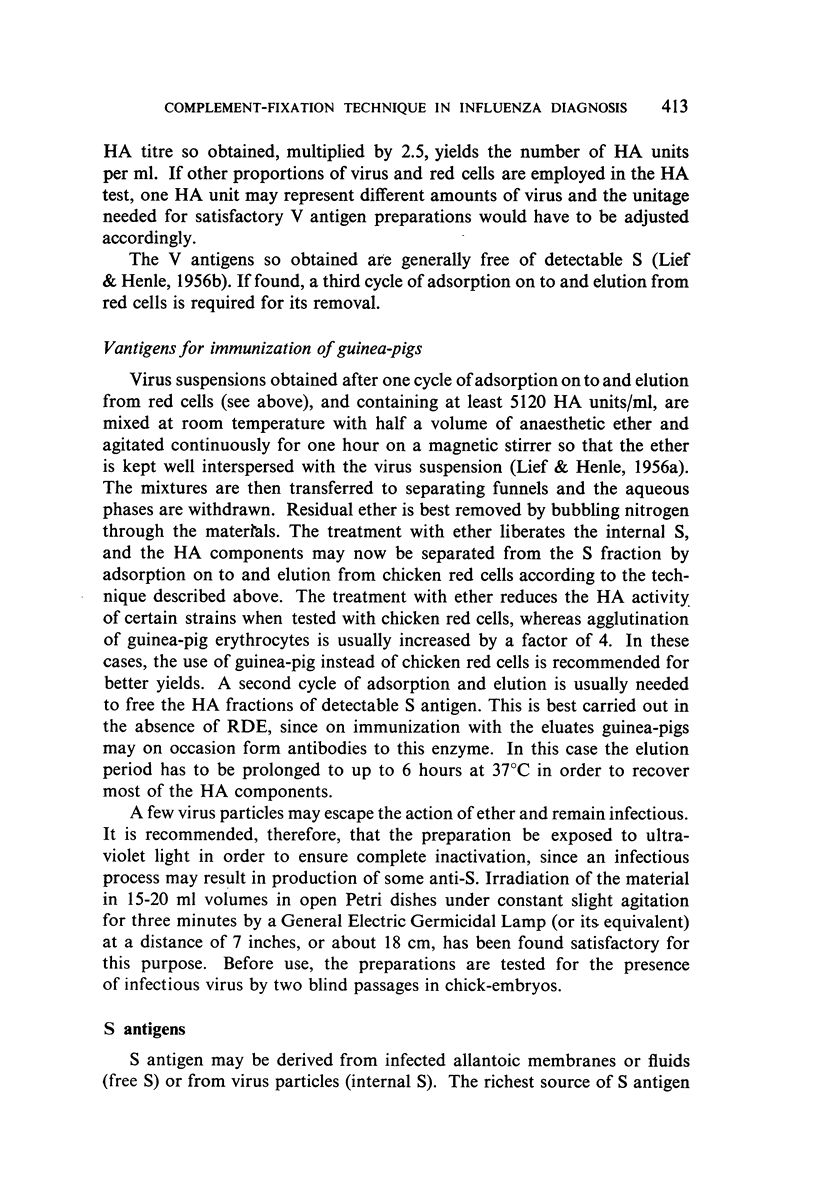
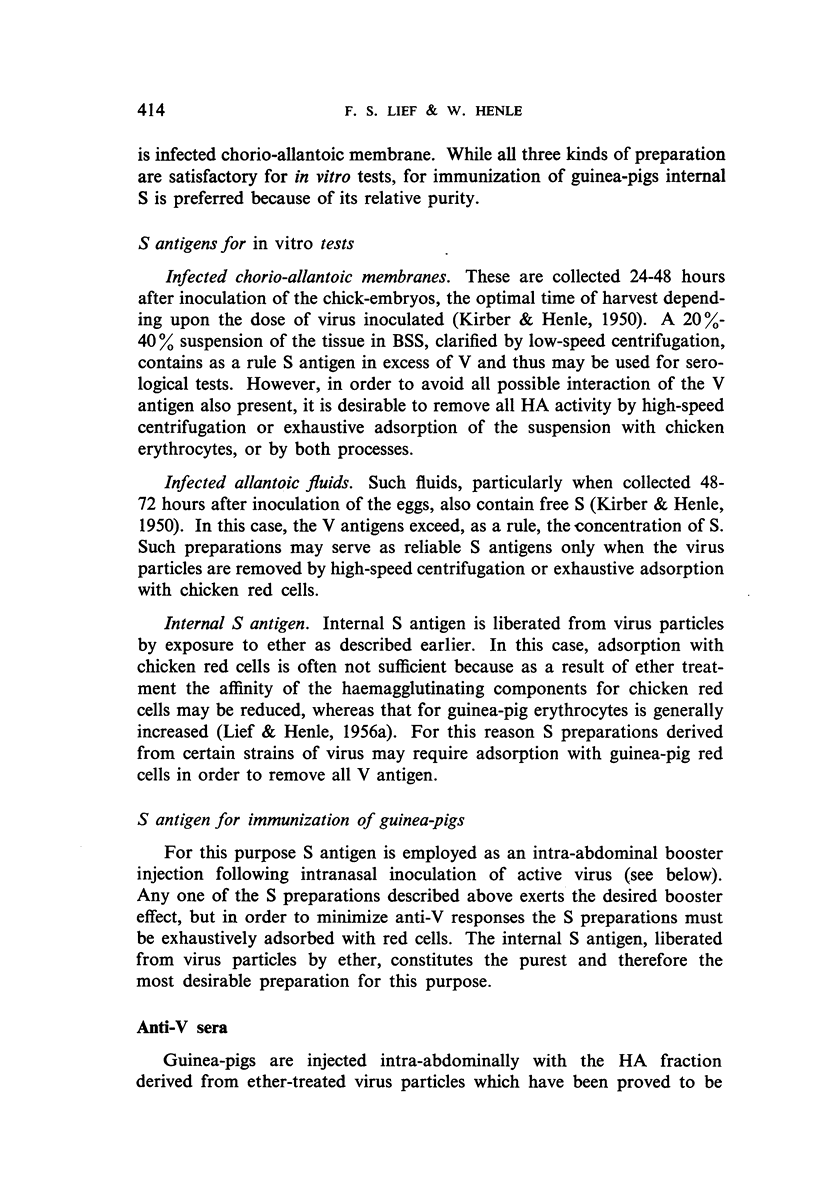
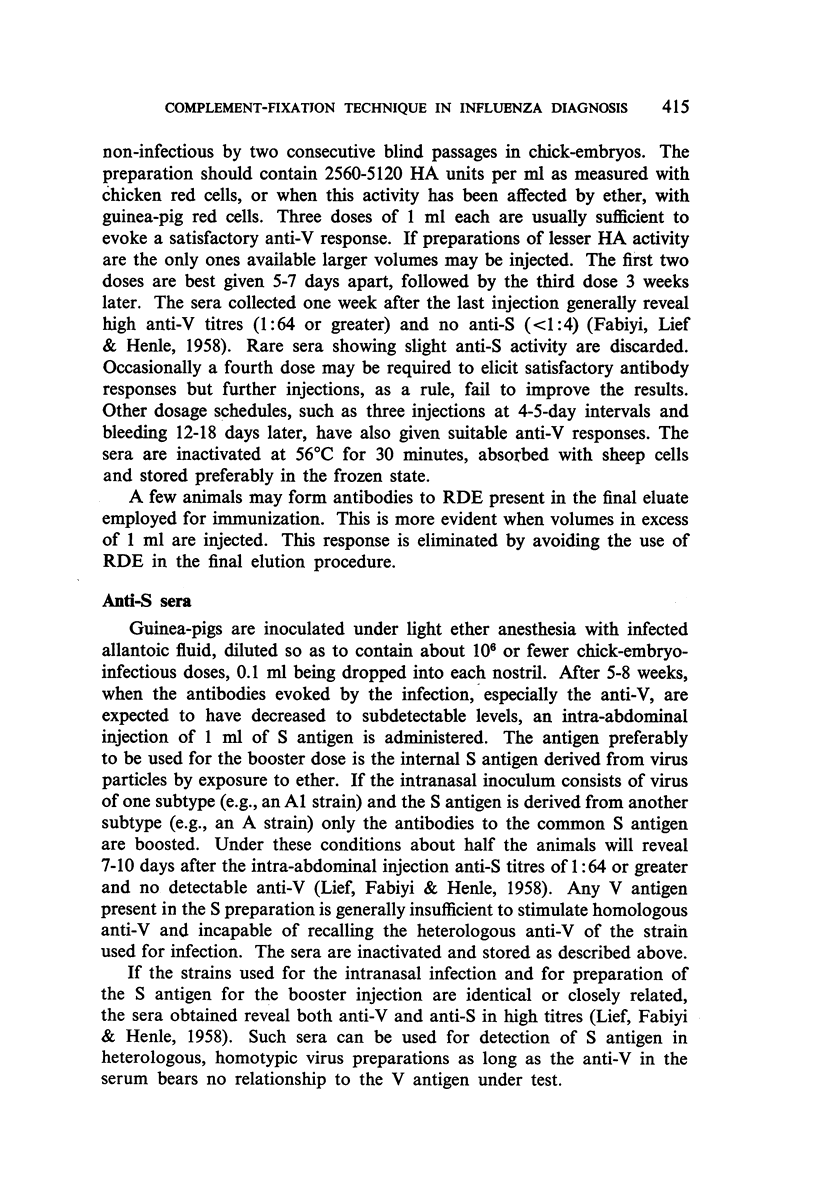
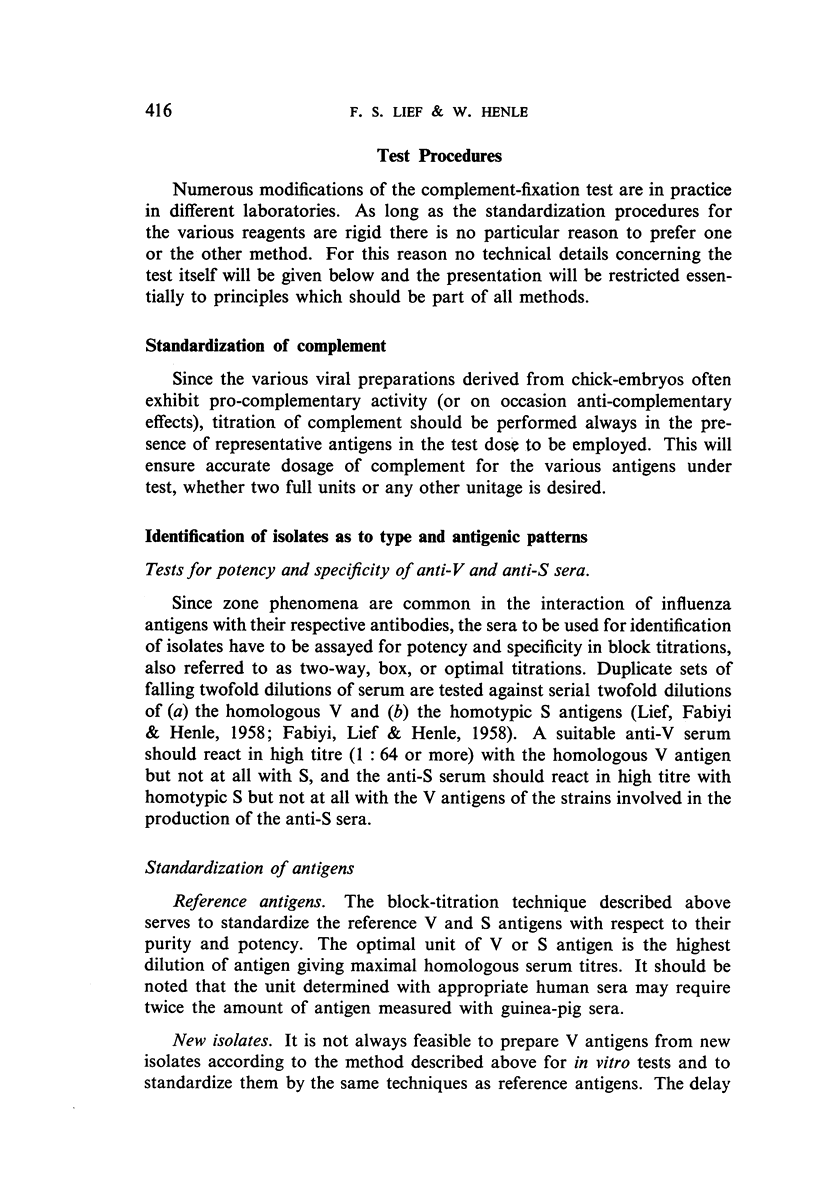
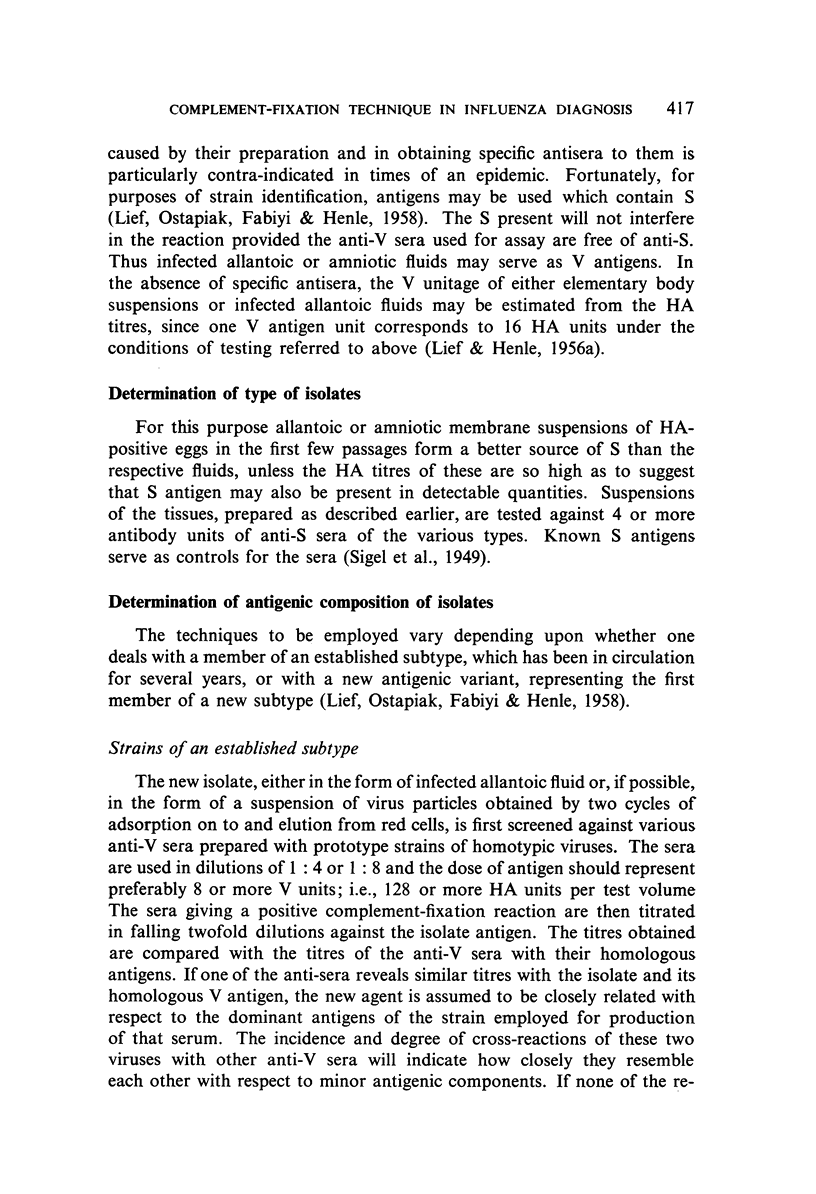
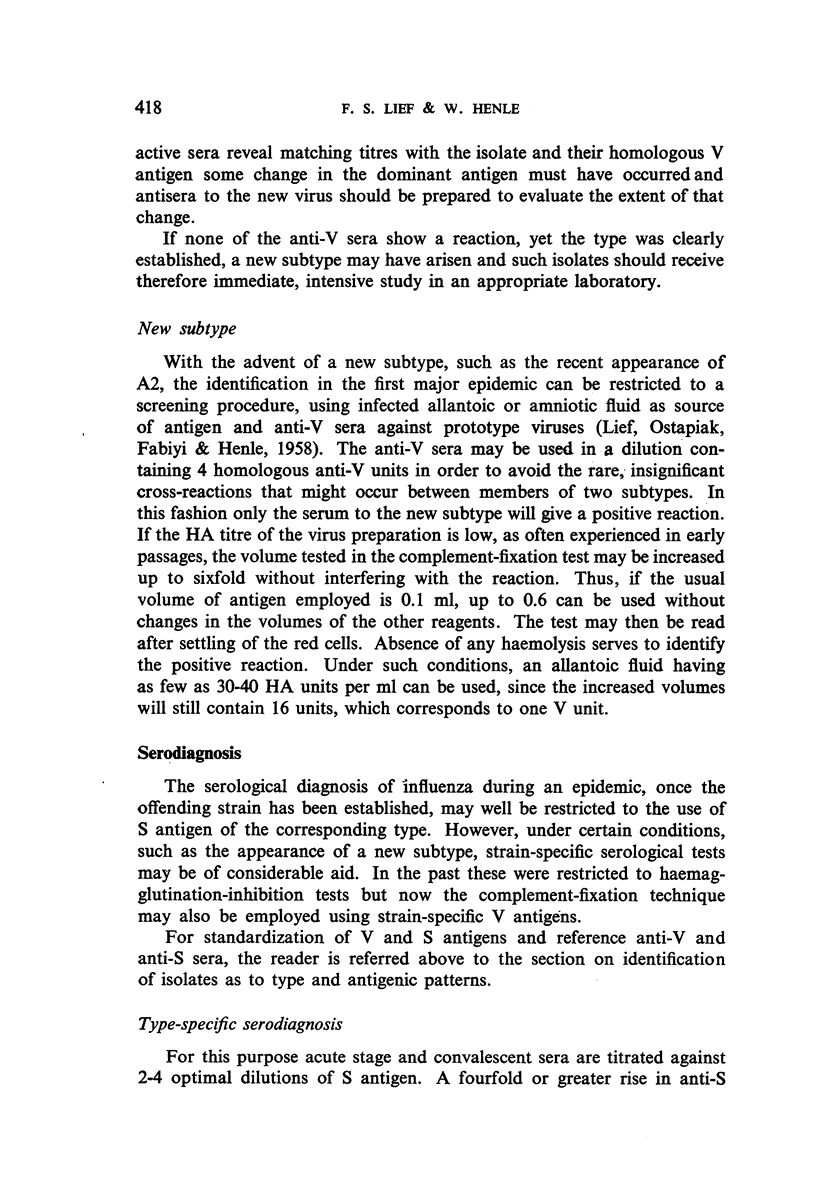
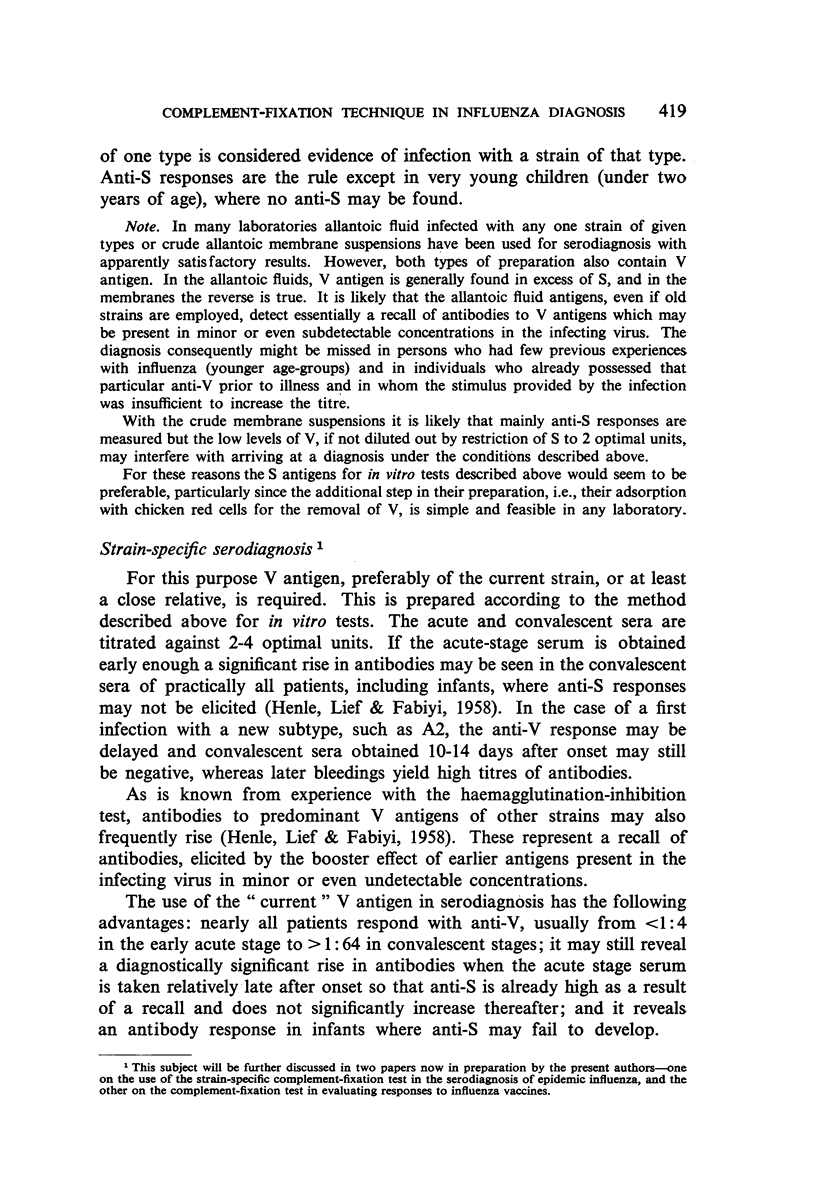
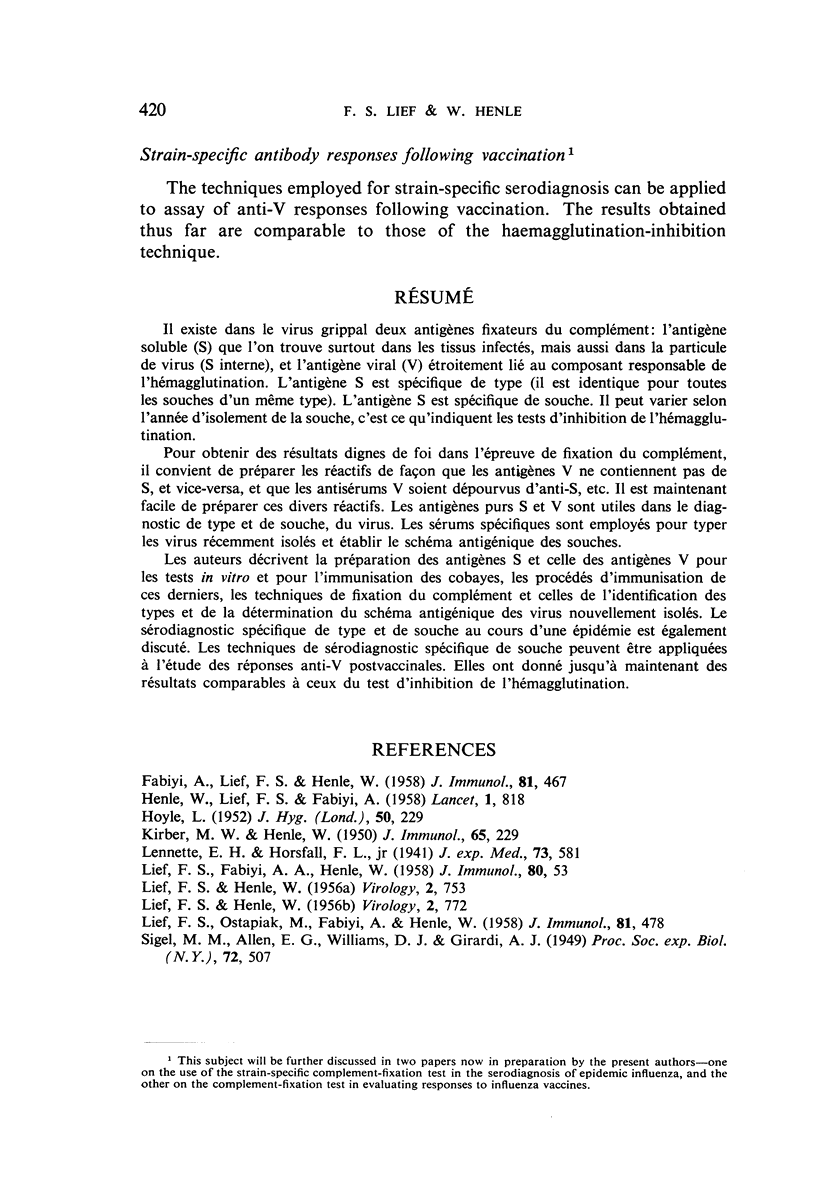
Selected References
These references are in PubMed. This may not be the complete list of references from this article.
- FABIYI A., LIEF F. S., HENLE W. Antigenic analysis of influenza viruses by complement fixation. II. The production of antisera to strain-specific V antigens in guinea pigs. J Immunol. 1958 Dec;81(6):467–477. [PubMed] [Google Scholar]
- HENLE W., LIEF F. S., FABIYI A. Strainspecific complement-fixation test in antigenic analysis and serodiagnosis of influenza. Lancet. 1958 Apr 19;1(7025):818–820. doi: 10.1016/s0140-6736(58)91740-9. [DOI] [PubMed] [Google Scholar]
- HENLE W., LIEF F. S. Studies on the soluble antigen of influenza virus. I. The release of S antigen from elementary bodies by treatment with ether. Virology. 1956 Dec;2(6):753–771. doi: 10.1016/0042-6822(56)90056-3. [DOI] [PubMed] [Google Scholar]
- HENLE W., LIEF F. S. Studies on the soluble antigen of influenza virus. II. A comparison of the effects of sonic vibration and ether treatment of elementary bodies. Virology. 1956 Dec;2(6):772–781. doi: 10.1016/0042-6822(56)90057-5. [DOI] [PubMed] [Google Scholar]
- HOYLE L. Structure of the influenza virus; the relation between biological activity and chemical structure of virus fractions. J Hyg (Lond) 1952 Jun;50(2):229–245. doi: 10.1017/s0022172400019562. [DOI] [PMC free article] [PubMed] [Google Scholar]
- KIRBER M. W., HENLE W. A comparison of influenza complement fixation antigens derived from allantoic fluids and membranes. J Immunol. 1950 Aug;65(2):229–244. [PubMed] [Google Scholar]
- LIEF F. S., FABIYI A., HENLE W. Antigenic analyses of influenza viruses by complement fixation. I. The production of antibodies to the soluble antigen in guinea pigs. J Immunol. 1958 Jan;80(1):53–65. [PubMed] [Google Scholar]
- LIEF F. S., OSTAPIAK M., FABIYI A., HENLE W. Antigenic analysis of influenza viruses by complement fixation. III. Rapid identification of new isolates. J Immunol. 1958 Dec;81(6):478–483. [PubMed] [Google Scholar]
- Lennette E. H., Horsfall F. L. STUDIES ON INFLUENZA VIRUS : THE COMPLEMENT-FIXING ANTIGEN OF INFLUENZA A AND SWINE INFLUENZA VIRUSES. J Exp Med. 1941 Apr 30;73(5):581–599. doi: 10.1084/jem.73.5.581. [DOI] [PMC free article] [PubMed] [Google Scholar]
- SIGEL M. M., ALLEN E. G. Immunologic response of hamsters to influenza virus strains. Proc Soc Exp Biol Med. 1949 Nov;72(2):507–510. doi: 10.3181/00379727-72-17483. [DOI] [PubMed] [Google Scholar]


